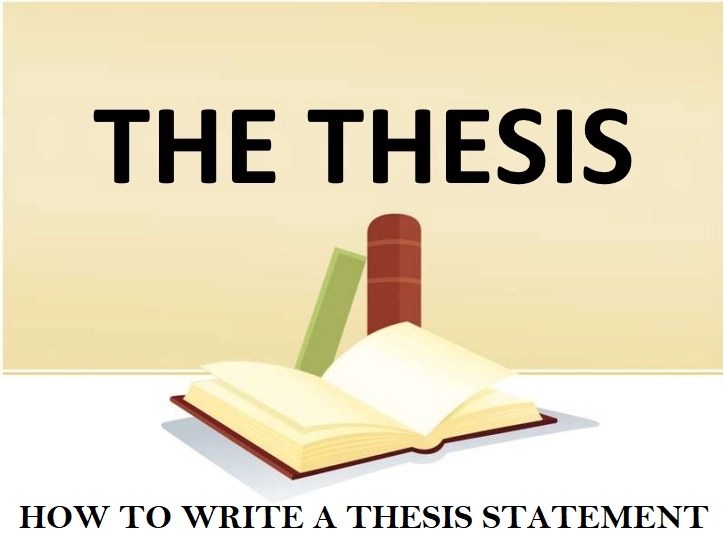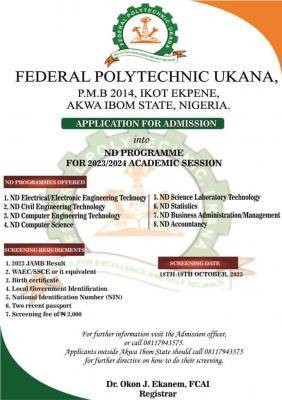
Introduction: A lot of students worry or tend to become confused when they are required to write a thesis statement or a dissertation in an Essay or an Academic work. One may ask, why? It is simple, lack of understanding of what thesis writing means and what is expected, has always been the source of confusion for most students. However, in this article, we will be explaining what a thesis means, how to structure a thesis statement, types of thesis statement, the difference between a topic and a thesis statement, examples of different types of thesis statement and proposal.
What is the Meaning of the Thesis Statement?
Quite often, a thesis statement comes at the beginning of an essay, just after the topic of the Essay has been introduced. The Thesis Statement is expected to give the readers/audience the opinion of the writer/his interpretation of the subject matter or his/her point of view.
This is the part in which the writer is expected to take a stand or make a claim that may be different from what others may think, this statement is expected to shed light on the direction the essay or Academic work may follow stating the main points.
The Thesis Statement is mostly connected to the Introduction with transition words like, however, but, because, therefore etc. While there are varying views as to the best position to include a thesis statement, while there are other writers and professors who believe that they are best suited for the first paragraph after the Introduction, there are others who believe that thesis statement should be larger and can’t be drafted into just one paragraph, rather they should be included at the end of the second or third paragraph. Nevertheless, thesis statements are best suited at the end of the Introduction especially for essays with five paragraphs.
Five (5) Types of Thesis Statements
There are five types of thesis statements and we shall be discussing all of them and what makes them stand out in essay writing.
1) The Argumentative or “Point-of-View” thesis: This type of thesis presents an argument or an opinion to be shared. In this kind of thesis, the writer is expected to argue the case presented and share his/her own opinion about the subject matter. Examples: A) Open grazing should be banned in states in Nigeria to curb the destruction of farm produce, human lives, and the frequent clashes between herders and villagers.
Wildlife destruction should be more strictly regulated to prevent economic and social exploitation, as well as the going into extinction of some wild animals.
1) The Evaluation thesis: In this type of thesis, you are expected to evaluate the strength and weaknesses of the thesis and also state your reason for deciding on a particular viewpoint.
Example: a) Thomas Ivan Edison is considered one of the greatest inventors in the world not just because he invented the light bulb but also because of his unique contribution to the invention of so many other important assets to man.
1) The Analysis thesis: In an analysis thesis, the writer is expected to examine the components of the idea and then discuss how they work together to achieve a common goal.
Example: a) The lack of state police or local units in the police force to interface with people in the neighborhood contributes to the unease felt between the people and the police force, making the idea of solving crime on the streets and the belief in the phrase “Police is your friend” implausible.
1) The Comparison thesis: Here one is expected to examine the components of the idea and what makes up the idea, to understand it, and provide a reasonable conclusion.
Examples: a) The comparison between day schools and boarding schools, shows that boarding schools give children the opportunity to learn to live independently away from their parents and be able to take care of certain other tasks without the guidance of their parents.
Most people have compared the electric cars with their non-electric counterparts have been able to show that electric cars are more cost-efficient, as one may purchase more than the value of his/her car in petrol over a 10 to 15 years life span of the car.
1) The Cause and Effect thesis: In this thesis, the focus is usually on how actions and events contributed to certain outcomes.
Example: a) Most people believe that continuous rise in Inflation is a result of poor management of the economy, however, the rise in Inflation is caused by continuous borrowing by the present government.
How to Structure a Thesis Statement:
In drafting a good thesis statement, certain structures must be taken into cognizance, as such, one must be aware of qualities that make a thesis statement a good one and qualities that would make it less acceptable by the examining body. Let us start with some of the things that should not be in a good thesis statement.
3 Things You Must Avoid Writing In a Thesis statement
✗ Avoid including a question.
✗ Avoid including statements of fact that need no further proof or support.
✗ Avoid including a compilation of everything on your paper.
Qualities of a Good Thesis Statement
✗ It should be researchable.
✗Your thesis statement should be interesting, such that the reader would be motivated to read more.
✗ It should be limited such that you can build upon your ideas in the body of your work.
✗ It must have evidence.
✗ The thesis statement should be manageable.
Now that we have seen what should be included in a thesis statement and what should not be included in a thesis statement, the questions most people usually ask are, what is the difference between a topic and a thesis statement? And how then do I go about formulating a thesis statement?
Difference between a Topic and a Thesis Statement
Often time’s students tend to confuse the topic with the thesis statement, thereby turning the thesis statement into the very topic of the essay that is to be read. However, we should understand that a thesis statement is not the topic but a short explanation of the topic in a way that positions the direction of the essay. It is like a program pamphlet that tells you ahead of time, how the program will be organized but in this case, it’s the essay. The thesis statement explains what each part of the essay contains.
On the other hand, the topic is a general idea of the essay. It is a particular topic that has been arranged by the thesis statement. The thesis statement on the other hand provides more reasons to support the topic.
How to formulate a thesis statement
Step 1: A thesis is a product of critical thinking, close reading, brainstorming, and analysis.
Step 2: So before you decide to develop an argument on a specific topic, you have to gather and arrange enough evidence through research.
Step 3: Once you read closely and can comprehend and interpret what was read, then you will probably have a working thesis statement, with an argument that you think can support the thesis.
Step 4: After you are done drafting your work thesis, you must review them by asking certain important questions that all good thesis statement must answer and they are:
Have I taken a position on this topic that others may not agree with? If yes, then you have done well as that is the main idea about the thesis statement, just like we mentioned earlier in this article. You should not state facts here but bend towards a particular argument.
Have I answered the question? Reviewing the question after drafting a thesis statement, helps you decide if you are on the right track or not.
Does my thesis answer the question “Why” or “How”? When a reader’s first response is how or why then it helps you to be more specific as to what you are writing about.
Is my thesis statement vague or specific enough?
When your thesis statement is too vague, then you don’t have a strong argument. Words like “good” and “successful” in a thesis statement show that you are not being specific, you have to explain what specifically makes a thing good or successful.
Was I able to stay on topic without wandering off in my thesis?
You may have to change either your thesis or the body of your essay if they do not seem to go together. Your thesis must be in synchronization with the body of your work.
Meaning and Examples of Proposals
When we talk about the proposal, two things come to mind 1) A romantic scene with a man kneeling with a ring in his hand while proposing to his better half 2) the submission of a document to an individual or an organization, requesting to be considered for a job or project. However, the dictionary defines a Proposal as a suggestion or plan, especially one that is written and formal, submitted for consideration to another.
Also, earning more business often starts with submitting an effective proposal. Drafting a compelling proposal means writing for someone and showing them that you have the solutions to their problems. But in this article, our major focus will be centered on the Thesis proposal and examples of the thesis proposal.
So what then is a thesis proposal? A thesis proposal can be defined as a document that defines the issues peculiar to the thesis, it defines the thesis topic and gives credence to why the topic needs further research. The proposal is expected to recognize a problem and proffer a solution to that problem. In Academia and most social sciences, a proposal must include the following:
- A short introduction, which defines the topic and explains the purpose of the thesis
- A literature review that explains the most relevant journals/articles and theories related to the thesis topic
- The methodology should include hypotheses, materials, participants, procedures, and the research questions.
- Then lastly the reference list or bibliography. In which most of the sources should be from reviewed journals and articles.
Other types of proposals are;
- Unsolicited Proposals: This is a proposal submitted to an individual/organization or a sponsor who has not issued a specific desire to receive proposals but who is believed to have an interest in the subject.
- Solicited Proposals: This is a proposal submitted to a sponsor as a result of an indication of interest from that sponsor. This type of proposal always comes with specific requirements.
- Continuation Proposals: This is a proposal that is submitted to confirm the original proposal, this particular proposal is dependent on how satisfied the sponsor is with the work done so far.
- Renewal Proposals: This is a proposal submitted in a request for a project that is coming to an end, this kind of proposal bears a similarity with the unsolicited type of proposal.
So for every call from a potential client or sponsor to submit a bid, there are bad and excellent submissions. For a proper understanding of how to improve your chances, we have listed several things that must be included in your proposal for you to stand a better chance when submitting a proposal for non-academic work.
- Title: A good title should include your name, the name of your company, your prospect’s name, and the date of submission.
- Table of contents: This makes your proposal easy to read as most business people may not have time to read through everything
- The problem statement: This is where you state the problem you want to solve
- Proposed solution: This is where you show how you can solve the problem and make your clients life better
- Qualifications: Here you are expected to state why you think you are most qualified for the job and what your company does best.
- The timeline of the project: This is where you show that you have analyzed the job and you know how long it will take you to finish it.
- Billing, Pricing, and legal: Here you can outline how you want to be paid, giving your client different options to choose from
- Terms and conditions: This is where you state everything clearly including the legal aspects of the deal.
- Acceptance: This is where you add a small section at the end of the proposal for your clients’ signature, assuming they are impressed and want to sign your proposal.
In conclusion, at the end of this article, we can conclude that we fully comprehend what the Thesis statement is, the difference between thesis statement and topic, how to properly structure a proposal, and the meaning, types, and examples of proposals. This article gives us a feel of what one is expected to know as regards Thesis both in Academia and in the Business world.




